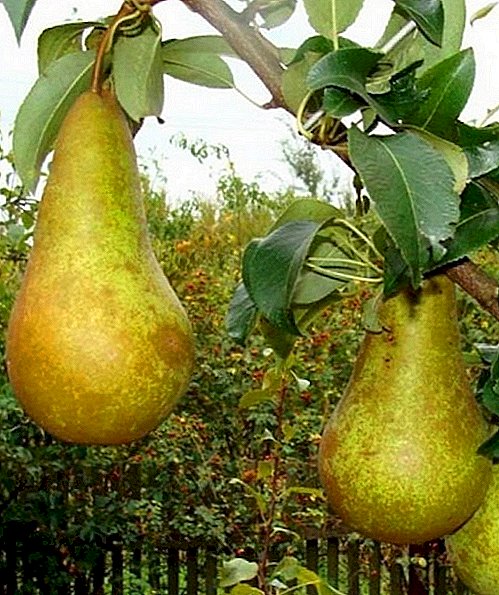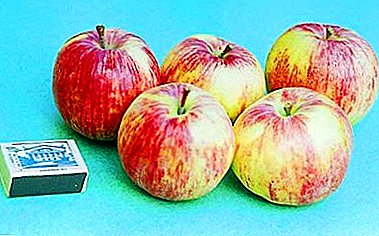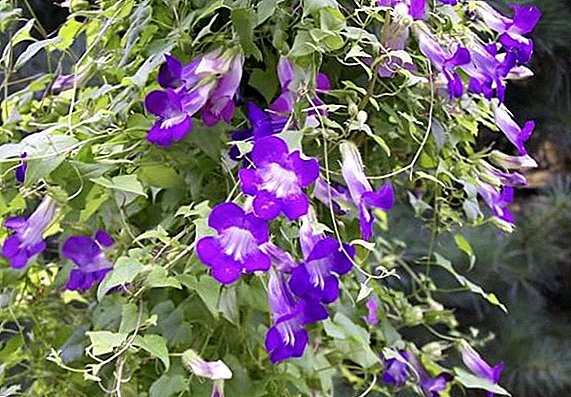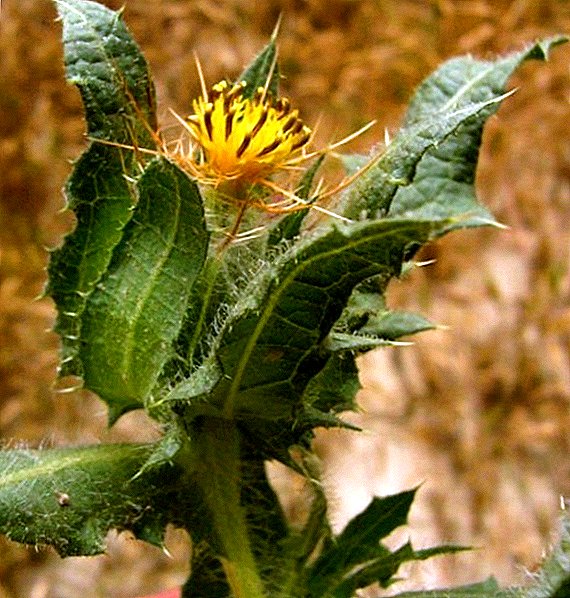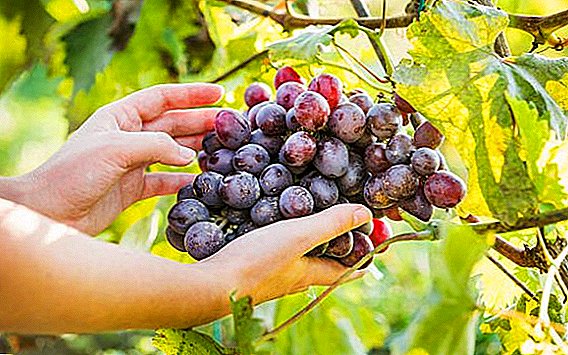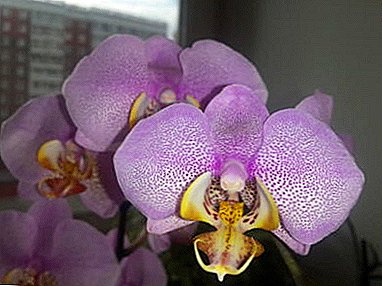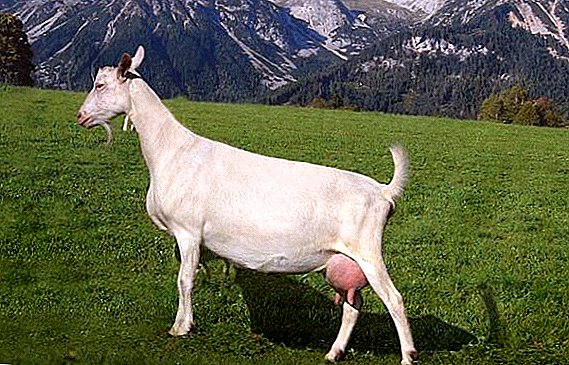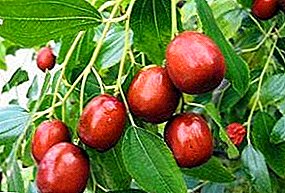
Zizyphus is a plant of the Krushin family, which is called unabi, jujube or jujube.
Zizyphus is the birthplace of China, where gifts unabi began to feast on 4000 years ago.
By the way, zizafun, from which originated the name Zizifus, is the Persian name of any edible fruit.
Now the plant is quite common, is found in Australia, Brazil, Japan, Malaysia, the Caucasus, Ukraine.
Jujube is a small (5-7m) long-lived tree with dense leathery leaves and small light-green flowers.
The branches of off-grade plants are often decorated with long sharp spikes. In October, on the site of flowers appear fruits from a slightly yellowish to reddish-brown color.
Zizyphus fruits contain the following elements:
 vitamins of group A, B, C;
vitamins of group A, B, C;- trace elements;
- fats;
- organic and ascorbic acids;
- glycosides;
- polyphenols;
- phytosterols;
- triterpenes;
- nitrogen-free glycosides;
- nitrogen-containing organic compounds.
Features wick irrigation violets.
Read here about the types of irrigation systems in the country.
Learn how to care for a gardenia flower: //rusfermer.net/sad/tsvetochnyj-sad/vyrashhivanie-tsvetov/uhod-za-gardeniei.html
Useful properties of jujube
Ziziphus has a beneficial effect on the body:
- lowers pressure;
- relieves anxiety;
- improves the digestive tract - function;
- treats skin diseases;
- reduces the formation of fibrous plaques in atherosclerosis;
- successfully treats cough, eliminates unpleasant sensations in the oral cavity;
- improves the effect of the urinary system;
- perfectly tones up;
- leaves have an anesthetic effect.
How to grow jujube on your own site
 Jujube thermophilic. It usually grows in a warm climate, so it can be grown, for example, in Udmurtia, but it is unlikely to enjoy the fruits.
Jujube thermophilic. It usually grows in a warm climate, so it can be grown, for example, in Udmurtia, but it is unlikely to enjoy the fruits.
In the cold winters, unabi plants freeze out almost to the roots.
There is the result of growing jujuba in greenhouses in the northern regions, but young zizyfusa did not give fruit, grew sick and stopped growing.
Landing time
"Breast berry" planted in early spring or in its middle. In the autumn - in the last decade, but not ingrained sapling can freeze.
Fertilizer and humus should be applied to the pit prepared for zizifus.
Placing the plant in the center of the pit, carefully shed. Then, pressing the seedling more tightly to the bottom of the pit, sprinkle the root processes with soil.
Shed again, add a little more ground, tamp lightly. By applying these landing techniques, it is possible to achieve painless rooting.
A place
 Unabi loves light very much. In the shade of jujuba it grows poorly and blooms, flowers always turn out to be empty flowers, therefore for planting it is worth picking up a place hidden from the cold wind, but accessible to the sun's rays.
Unabi loves light very much. In the shade of jujuba it grows poorly and blooms, flowers always turn out to be empty flowers, therefore for planting it is worth picking up a place hidden from the cold wind, but accessible to the sun's rays.
Before disembarking, it is necessary to take into account: as the crown grows, the unabi becomes quite sprawling, therefore it is better to adhere to the landing scheme 3 by 4 meters.
The soil
Jujube is unpretentious to the ground, but responsive to care.
For the best survival of zizifus, the ground under young plants should not be dug up, but rather mulched, periodically adding organic matter.
We do not need to allow weeds to grow over the place where unabi is planted: he does not like this neighborhood.
Jujube, due to the structure of its roots, easily withstands dryness. But he does not accept excessive soil moisture.
Pollination
Juzuba is a cross-pollinated plant, so for good pollination you should put a couple more copies next to it, perhaps even a seedling grown independently from a stone.
Fruiting
 The plant blooms and blossoms late, which allows it to avoid frost.
The plant blooms and blossoms late, which allows it to avoid frost.
It is a lot of flowers, they emit pleasant sweetish aroma, than attract a large number of insects. Duration of flowering - about 60 days.
Although some of the flowers remain unpowered, juzuba, when fruiting, can produce up to sixty kg of berries from an adult specimen.
With careful care, even a breast-grown “seed” from the bone begins to form the ovary by as early as 2-3 years, and varietal seedlings, subject to good rooting, are able to bring the berries already for the first year.
Pruning
It is better to form the crown of unabi 1-2 years after rooting, so as not to injure. The crown is usually given a cup-shaped appearance with the help of 4-5 main branches located around the trunk.
The main trunk is cut to 15-20 cm, other branches are cut at the same level with it.
During the growth of Chinese dates, sanitary pruning is carried out, cutting off the branches that grow inward.
Elegant fritillary will decorate any garden and will delight with its flowering for a long time.
We cook garden pitch with our own hands, read more at the link: //rusfermer.net/sad/plodoviy/uxod/sadovyj-var.html
Diseases and pests of ziziphus
Zizifus almost does not get sick, insect pests do not touch it either. Birds are interested in ripe fruits, so the berries should be removed as soon as they are ripe.
Breeding
Zizyphus is propagated by root shoots, cuttings, grafts or seeds.
Bones for planting stratified for 60 days. Before sealing, it is recommended to gently tap the bone with a hammer in order to form a small crack: this way it will be easier for the germ to turn.
Close up the bones 3-4 cm deep into the ground spilled with warm water. Sowing cover film to avoid evaporation of water from the surface.
After 20 days, sprouting sprouts should be moved to the individual dishes.
Young zizifusa is transplanted to a permanent landing site only a year later.
Grown from seed plants do not have hereditary varietal characteristics. Fruit is not as abundant as the "parents", and begin to bloom much later, so the plants should be planted.
Chinese date varieties
The most popular varieties are:
 Chinese 2A. Large-fruited variety, berries weight from 11 to 20 grams. Fruits are dense, suitable for jam, stewed fruit, candied fruit making.
Chinese 2A. Large-fruited variety, berries weight from 11 to 20 grams. Fruits are dense, suitable for jam, stewed fruit, candied fruit making.
Candy Early ripe, very fruitful. Berries - 4-8 grams. Pulp berries juicy, sweet. Berries varieties "Candy" suitable for both blanks and for food.
Koktebel. Late large-fruited variety. Berries reach 52 grams.
Chinese 93. Medium early variety. Berries weigh from 5 to 10 grams. The shape of the berry is oblong, slightly irregular, curved. Purpose - universal
Use of Zizyphus
Jam Recipes
Syrup: 500 ml of water, 1 kg of sugar, 10 grams of lemon.
Picked up with a toothpick berries pour boiling syrup, leave for 7-8 hours, then boil for 25 minutes. Pour jam in sterilized, roll up.
Compote recipes
 Fold clean, dry rafts into sterilized 3-liter jars. Fill with water 90 °.
Fold clean, dry rafts into sterilized 3-liter jars. Fill with water 90 °.
Boil water with sugar and lemon (for a 3-liter jar - 200-250 grams of sugar and 0.25 teaspoons).
Drain the water from the cans, pour syrup over it, roll it up.
Jam
Syrup: 1 liter of water, 700 grams of sugar (so much need for 1 kg of berries). Put the cleaned up berries into the pan, pour in syrup, boil for 2 minutes. Leave to brew for 7 hours.
Remove the bones from the berries, chop the pulp with a blender. Boil the resulting mass for 5 minutes, spread out on the banks, roll up.
Learning to dry grapes in an electric drier for raisins.
How to keep gladiolus bulbs at home, read here: //rusfermer.net/sad/tsvetochnyj-sad/vyrashhivanie-tsvetov/kogda-vikapivat-lukoveci-gladiolusa.html
Medicinal properties of ziziphus
Soothing tea. 10-15 berries pour 250ml of water 90 ۦ °, insist 15 minutes. Drink 1 hour before bedtime.
Broth to reduce pressure. 5-10 berries pour 500ml boiling water. Steam for 30 minutes. Cool, strain, add boiling water to 500ml. Drink 2 times a day for three months.
Ointment of unabi leaves. 100 grams of unabi leaves heated to 90 ° with 500ml of unabi olive oil, insist 10 days. Lubricate the boils with oil until it diminishes.
Infusion of zizyphus cough. 2 grams of the leaves of the plant to steam 300 ml of water 90 °, insist 1 hour. Drink 50 ml 3-4 times.
By planting magical zizifus in the yard, you will get not only vitamin-rich desserts, but also improve your health.


 vitamins of group A, B, C;
vitamins of group A, B, C; Features wick irrigation violets.
Features wick irrigation violets. Elegant fritillary will decorate any garden and will delight with its flowering for a long time.
Elegant fritillary will decorate any garden and will delight with its flowering for a long time. Learning to dry grapes in an electric drier for raisins.
Learning to dry grapes in an electric drier for raisins.

